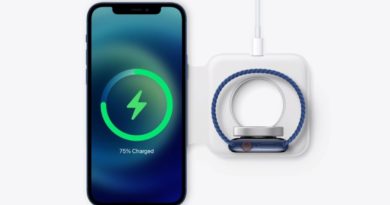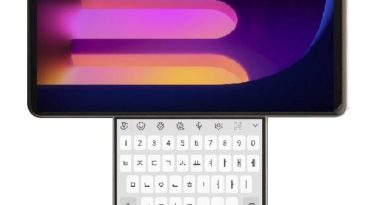iOS 14 features — all the biggest upgrades coming to your iPhone
Today we got out first look at iOS 14 — the operating system that will power the upcoming iPhone 12, as well as other generations of Apple’s handsets.
iOS 14 looks to be by far the most comprehensive software update Apple has introduced in years. It packs a range of new features, from an all-new home-screen interface and picture-and-picture video, to new capabilities for Siri (including real-time, on-device translation and a streamlined Messages experience, particularly when conversing with groups.
Here’s a deeper look at what the update will bring to both your current iPhone as well as the new iPhones that Apple plans to release this fall.
iOS 14: Release date
The iOS 14 developer beta is live right now. You’ll need to have an active Apple Developer account to get in on the new software today, but don’t despair, because an iOS 14 Public Beta is on the way and set for July.
If you’re curious how long you may have to wait for that public beta to show, in the case of last year’s iOS 13 update, the first public beta came out June 24, three weeks after the update was previewed at last year’s WWDC keynote.
During the iOS beta process, Apple releases a series of updates to stamp out bugs and fine-tune new features. Those updates roll out over the course of the summer. A final public release of the new iOS version usually takes place between Apple’s fall iPhone announcement and when those new smartphones arrive in stores. We’d expect that process to repeat itself with iOS 14, so look for the new version to come out shortly after Apple unveils the iPhone 12 — whenever that may be.
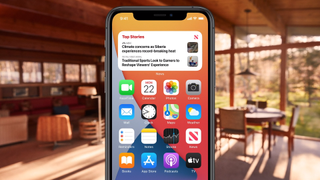
By far the most revolutionary change with iOS 14 is what Apple has done to the home screen. A new App Library page serves as iOS’ take on Android’s app drawer, except it intelligently groups apps based on category. Widgets can be resized and lifted out of their own page onto normal pages right alongside apps on the home screen.
These widgets are far more extensive than anything Apple has ever put into a previous iOS edition. The weather widget can be resized, for example, to take up four columns or two, and each change in size dynamically adds more information, like a week-long forecast.
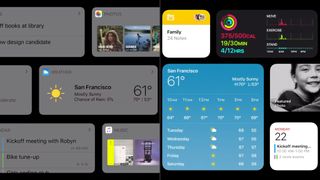
There’s also a new separate class of widgets called Smart Stacks. Essentially, a Smart Stack is like a dynamic widget that acts as a widget for a certain app based on contextual cues, or depending on the time of day. When you wake up, for example, your Smart Stack might show the weather. A couple hours later, perhaps the calendar. And when you get home, it’ll change again to display your fitness metrics. You can also manually swipe through all the apps included in your Smart Stack whenever you like.
For a closer look at all the changes coming to the iPhone’s iconic interface, be sure to check out our deep dive into how Apple has revolutionized the iOS 14 home screen.
iOS 14: App Clips
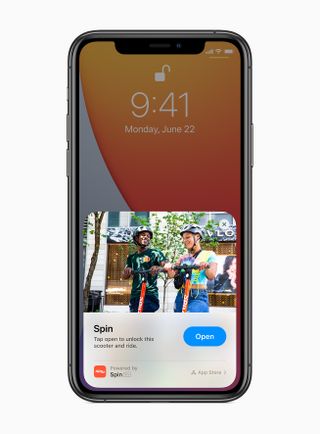
New, bite-sized snippets of apps, called App Clips, will allow you to use an app without downloading the entire thing. This can be useful for those short, one-time use apps that are necessary in the moment, but not ones you necessarily want to keep on your device forever. You’ll be able to use Sign In With Apple for apps downloaded in Clip form, so you won’t have to make a whole new account just for those brief use instances.
iOS 14: Messages and conversations
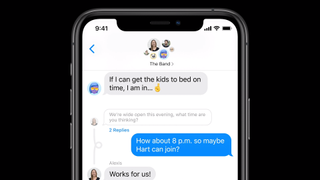
Messages has remained largely unchanged over the years, but it’s finally getting some added functionality with iOS 14. Outside of the requisite additions of new Memojis (there’s a face mask accessory now, unsurprisingly), the new Messages list screen provides a space at the top for you to conveniently pin contacts you talk to most frequently.
The other big upgrade pertains to group conversations. Now, you’ll be able to respond to a specific reply, sort of like how you can on workplace apps like Slack. And anyone who has ever been included in a massive iMessage group will appreciate the new option to turn off all notifications in a particular group conversation unless a member of the group pings you specifically.
iOS 14: Siri and translation
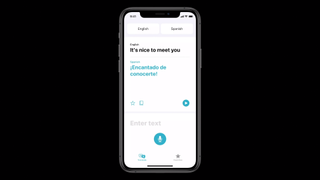
It seems like Apple is always promising new improvements to Siri with every iOS update, but iOS 14 might deliver on that promise.
Apple is going with a compact design for Siri. Instead of pulling up a separate Siri screen, you can tell the digital assistant just to launch an app, and it will do so directly from the home screen. Similarly, Siri requests like the weather will appear at the top of the screen.
With iOS 14, Siri will be able to do on-device dictation, so that your words stay on your device. Google Pixel owners can tell you how welcome that feature is. And Apple is boosting the translation powers of Siri to support conversations and not just snippets of translated phrases.
To that end, a new Translate app in iOS 14 will let you translate entire conversations right on the screen of your iPhone. Turning your phone into landscape mode creates a split screen with the conversation displayed in different languages on either side of the screen.
Translate is smart enough to automatically detect the language, Apple says. And all that translating and transcribing happens on the iPhone without any data being uploaded to the cloud. That means you won’t need an internet connection to converse with someone in another language, and the translation will be faster than ever before.
At launch, Translate will support 11 languages: English, Mandarin Chinese, French, German, Spanish, Italian, Japanese, Korean, Arabic, Portuguese and Russian. Translation will also be possible within Safari for the first time ever.
iOS 14: Picture-in-picture video
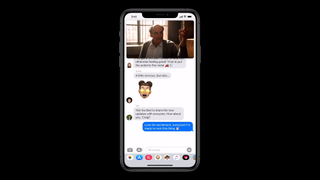
Phone screens are getting so large, you’d think Apple would have introduced a picture-in-picture video feature in iOS 12 or 13. Thankfully, the company is finally catching up with the times. You’ll be able to watch video while you’re in other apps on iOS 14, and the interface to do it is quite clever.
Videos will live in tabs to the side of the display that can be dragged out or tucked back in depending on when you actually want to see them. Videos can also be resized, which is really handy if you’re working on a task that requires most of your available display real estate.
iOS 14: Maps
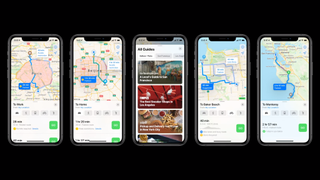
Apple has several changes planned for Maps, including new Guides. The idea behind Guides is that Apple will give you curated recommendations for places to eat and locations to explore in select cities. However, the more exciting addition to Maps involves helping you get around in ways that minimize your carbon footprint.
In iOS 14, you’ll be able to get cycling-specific directions that will alert you to bike lanes and paths. Your directions will let you know if you’ve traveling down quiet or busy roads, and you’ll also get a glance at the elevation on your route to warn you if there are some steep hills ahead.
If you’ve got an electric vehicle, Maps will add an EV routing feature that tracks the current charge of your vehicle. Your map will then display charging stations along your route, with Maps taking elevation and weather into account.
iOS 14: CarPlay and car keys
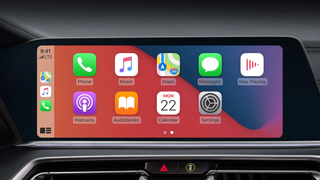
If you’re sick of lugging around physical keys, Apple has an alternative in iOS 14 with car keys in the Wallet app. Car keys use NFC, and you simply tap to unlock your vehicle. In some models, you’ll even be able to place your iPhone on the vehicle’s interior charging pad and then just press the ignition button to start the car.
Apple says its car keys feature is more secure than physical keys. And you can share keys with other iPhone users securely, thanks to the Secure Enclave embedded in Cupertino’s handsets. The first vehicle to support car keys in Wallet, the 2021 BMW 5 Series, will be available in July, though more will eventually follow.
Apple says that it is working with carmakers so that you’ll be able to keep your phone in your pocket or bag and still use your phone as a car key. New wallpaper options are also coming for CarPlay. And once again, Apple is adding useful tools for drivers of electric vehicles, like the ability to track your car’s charge level, and predict how long it will be able to run while taking factors like elevation into account. This functionality will exist within the normal Maps app, though it figures to be especially useful in tandem with CarPlay inside your vehicle.
iOS 14: Camera
If you missed Apple’s updates to the iOS camera interface during its WWDC 2020 live stream, that’s because they weren’t mentioned. However, they have been listed on Apple’s iOS 14 Preview page, and while they’re not as comprehensive as those home screen improvements, they are worth noting for shutterbugs.
iPhones on iOS 14 will spend less time dilly-dallying before the first shot you take, and they’ll also be able to snap multiple shots in quick succession faster than ever before. That’s critical, because some of Apple’s latest camera processing upgrades, like Smart HDR, introduce multiple frames with every picture, adding more time to every capture, albeit for a better result. This update should at least speed things up.
There’s also a new exposure lock feature in iOS 14, which will allow you to keep exposure values static while tapping around for the appropriate focal point.
iOS 14: Privacy features
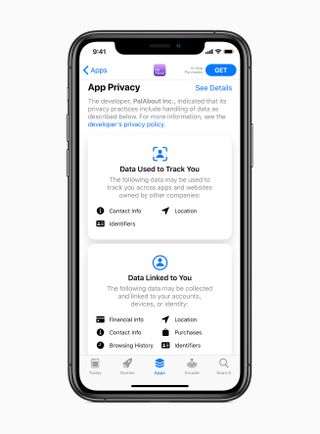
Apple’s iOS 14 includes some privacy features designed to give you more transparency and control. For instance, all apps are now required to obtain user permission before tracking them. Apple also says that App Store product pages will feature summaries of developers’ self-reported privacy practices in an easy-to-understand format.
Sign in with Apple is getting an upgrade, too, in iOS 14. Users will be able to upgrade their existing accounts to Sign in with Apple to better protect their privacy. You can also choose to share your approximate location instead of your precise location when asked for access.
iOS 14: Home app and HomeKit
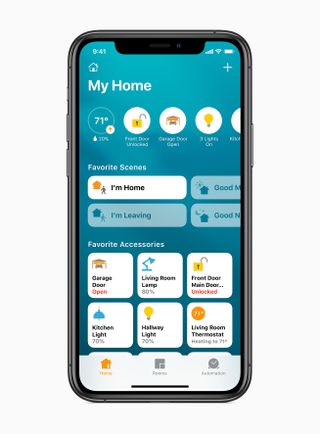
For those who like to use Apple’s Home app to control their smart home, it’s getting some welcome upgrades with iOS 14. This includes on-device face recognition, which means that compatible video doorbells and security cameras will be able to identify your friends and family.
Other highlights for the Home app in iOS 14 include new automation suggestions and expanded controls in Control Center for quicker access to accessories and scenes. And Adaptive Lighting will automatically adjust the color temperature throughout the day for compatible HomeKit-enabled lights.
iOS 14: Health
Apple is punching up iOS 14’s sleep tracking capabilities with iOS 14, by encouraging you to set sleep goals, recommending a bedtime and giving you the option of setting ideal sleep patterns for certain days of the week. iOS 14 will also be able to tell you how your listening volume preferences might be harming your hearing over time.
A new Checklist menu makes it easier to manage your data, while new metrics for mobility, medical records, symptoms and ECG allows you to establish a more complete understanding of your health.
iOS 14: What devices will support it?

One advantage the iPhone has over Android is that Apple’s smartphones can all update to a new version of iOS at the same time. Apple also does a good job maintaining iOS support for phones that are more than several years old, and thankfully, that’s all true for iOS 14 as well.
The following list of iPhone and iPod Touch variants will receive the iOS 14 update, though it’s important to note that specific features that rely on certain device hardware (like digital car keys, for example), will miss older models.
- iPhone 11
- iPhone 11 Pro
- iPhone 11 Pro Max
- iPhone XS
- iPhone XS Max
- iPhone XR
- iPhone X
- iPhone 8
- iPhone 8 Plus
- iPhone 7
- iPhone 7 Plus
- iPhone 6s
- iPhone 6s Plus
- iPhone SE (1st generation)
- iPhone SE (2nd generation)
- iPod touch (7th generation)
iOS 14: Should you download the beta?
It can be tempting to join Apple’s developer or public beta program and get your hands on the new features of an iOS shortly after they’re announced. But it invites a few risks. While Apple’s public betas are usually pretty polished, they’re still betas and will likely contain bugs. Your favorite apps aren’t always guaranteed to work perfectly with an iOS beta, especially early on the beta cycle. And of course, the developer betas, which are available a month earlier than the ones intended for public use, are especially rough.
For that reason, the advice we give with any iOS beta applies to iOS 14: Only install the beta on a phone you don’t need for everyday use. And if you don’t want to tangle with any potential bugs, we’d recommend sitting out the first few public beta releases, at least until Apple smooths out any show-stopping issues.
